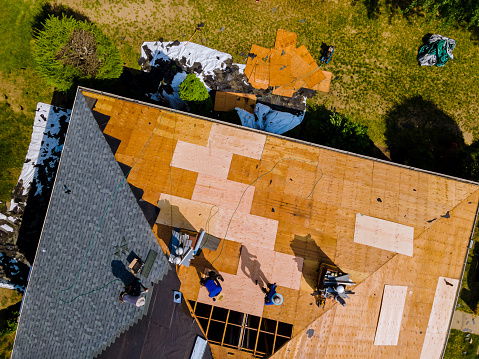Tips For Roof Installation

Most roofing problems result from shoddy workmanship. These roofs are often installed by contractors who were either too lazy to do the job properly, took shortcuts, or simply didn't know what they were doing. Sadly, this happens far too often in our fast-paced world.
Luckily, there are many ways to avoid these problems. Here are some tips for roof installation. Use the following checklist to ensure your new roof is installed correctly and lasts for many years. Installing a new roof requires two basic materials: a rafter (a piece of wood cut from framing lumber) and a sheathing board. The first two are commonly made of plywood, while the second is often OSB, or even tongue and groove. The roof will need underlayment and sheathing to protect the rafters and avoid leaks. Typically, installers will pre-drill holes from the backside of the roofing to prevent leaks. In addition to rafters, a metal panel will require drip edge flashing to seal the bottom edge of the roof. The first course of shingles should overlap the drip edge by approximately half to 3/4 inch.
Roofing nails are then nailed to the deck. The upper edge of the first course is marked by snapping a chalk line on the underlayment. Almost every roofer uses a nail gun to drive fasteners. Once the shingles are installed, roofers will need to install gutters and downspouts on the eaves. These will direct runoff away from the foundation.For more facts about roofing, visit this website at https://www.youtube.com/watch?v=TOSMNxvEjIU. The underlayment is a waterproof material. It is typically made of felt paper, but you can also choose synthetic underlayment materials. You can buy roofing underlayment in two different thicknesses, with #30 being thicker than #15. Before hiring a professional roofer at https://www.amenityroofing.com/find-a-roofing-contractor-near-me-aurora-il, it is important to understand the installation process. Different roof systems and materials require different processes. Always remember that the first step in any roof installation project is safety. Always remember to wear proper safety gear and follow manufacturer instructions. If you're planning to install a new roof yourself, a qualified professional can guide you through the process. You'll be glad you did! And you'll be safe for decades to come!
When choosing the material for a new roof, your home's architecture plays an important role in the selection. Traditional homes need slates or tiles while modern homes need wood, metal, or asphalt. Your roofing contractor at amenityroofing.com can give you a professional opinion on the best material for your home's needs. However, remember that the more durable the material is, the more expensive it will be. You can also repair leaks with flashing instead of replacing the entire roof.
